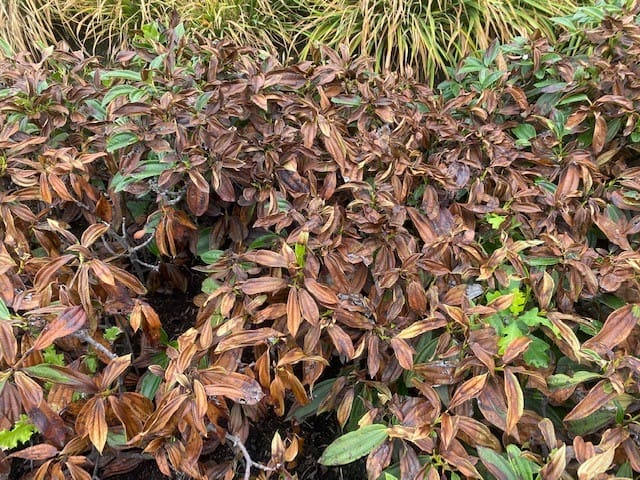
The recent heatwave that impacted much of Western North America from June 26-29 set all time-records for daytime temperature highs over the four-day period.
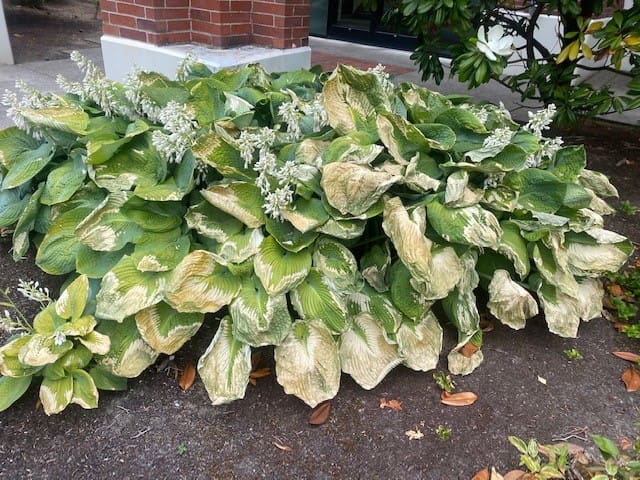
The main cause for the heatwave was from a high-pressure system that sat over the region, earning it the term ‘heat dome.’ Warm overnight temperatures also helped temperatures climb over the period.
Portland, Oregon’s average temperature high over this period was 112 degrees Fahrenheit. It was 108 degrees on June 26, 112 degrees on June 27 and 116 on June 28, setting heat records for the city. In Seattle, Washington, the city had only hit 100 degrees three times in the previous 126 years. It hit that temperature in three consecutive days during the heatwave.
Plant Damage Aftermath
Naturally, with temperatures more commonly found in Death Valley hitting the temperate region of the Pacific Northwest a number of plants experienced leaf scorching and tip burn.
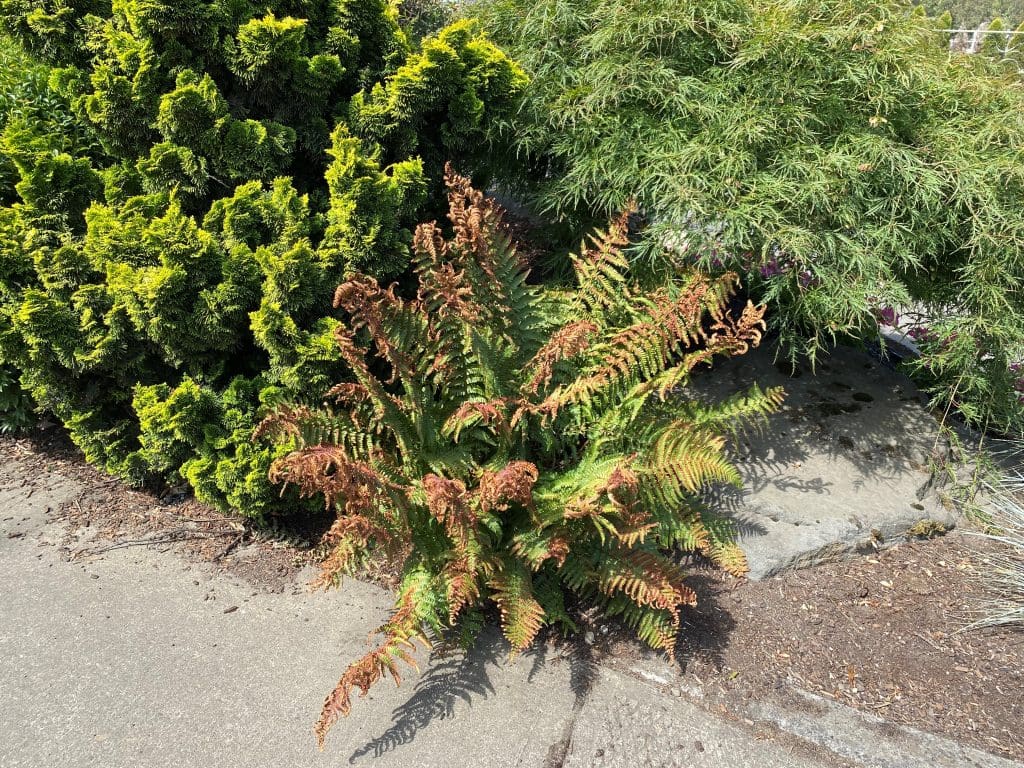
What’s unclear is how much plant material is dead and how much will be able to recover. Bob Grover, LIC, president of Pacific Landscape Management in Portland, Oregon, says they currently have a wait and see mindset.
“This isn’t the time of year we want to replace plants and most of the plants that are damaged are also medium to large-sized plants,” Grover says. “I would say maybe 10 percent of plants were damaged but those that were damaged were maybe damaged beyond recovery.”
Nathan Dirksen, COO of Dennis’ 7 Dees Landscaping & Garden Centers, based in Portland, Oregon, says prior to the heatwave they pushed out a lot of information to their customers about how to help protect their plants. Grover says this was an incredibly unique event and probably one that happens once in a lifetime.
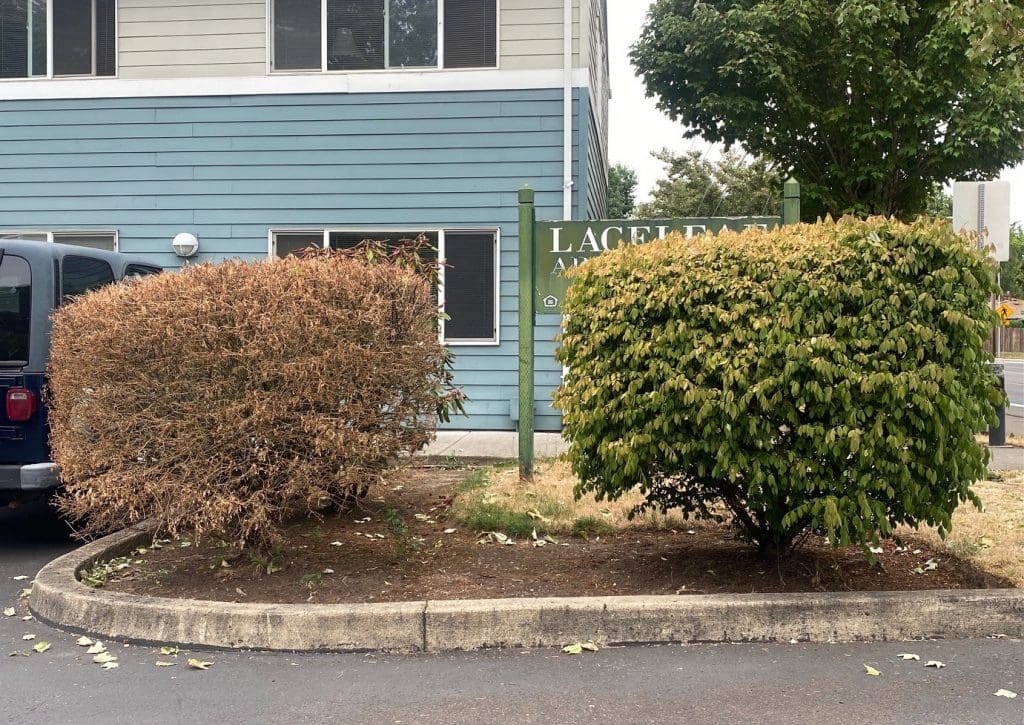
As for which plants were impacted the most it was fairly random across the board. Dirksen says a lot of the native material like hydrangeas and rhododendrons have shown a lot of burn damage since they’re not accustomed to that level of heat. In other instances, he’s seen a 120 foot Douglas fir where one half looks like it was in a fire while the other side is green.
“It’s very spotty,” Grover says. “Some plants were maybe killed, and other plants of the same variety were minorly impacted.”
Grover says they had plant damage whether a site was wet or dry. Plants were more likely to have burn damage if they were fully exposed or surrounded by buildings or asphalt where the heat was probably even higher.
“It seems to be more about when the air temperatures in Oregon get to be 116 degrees, it doesn’t really matter what’s in the ground, it’s about how healthy the plant is,” Grover says.
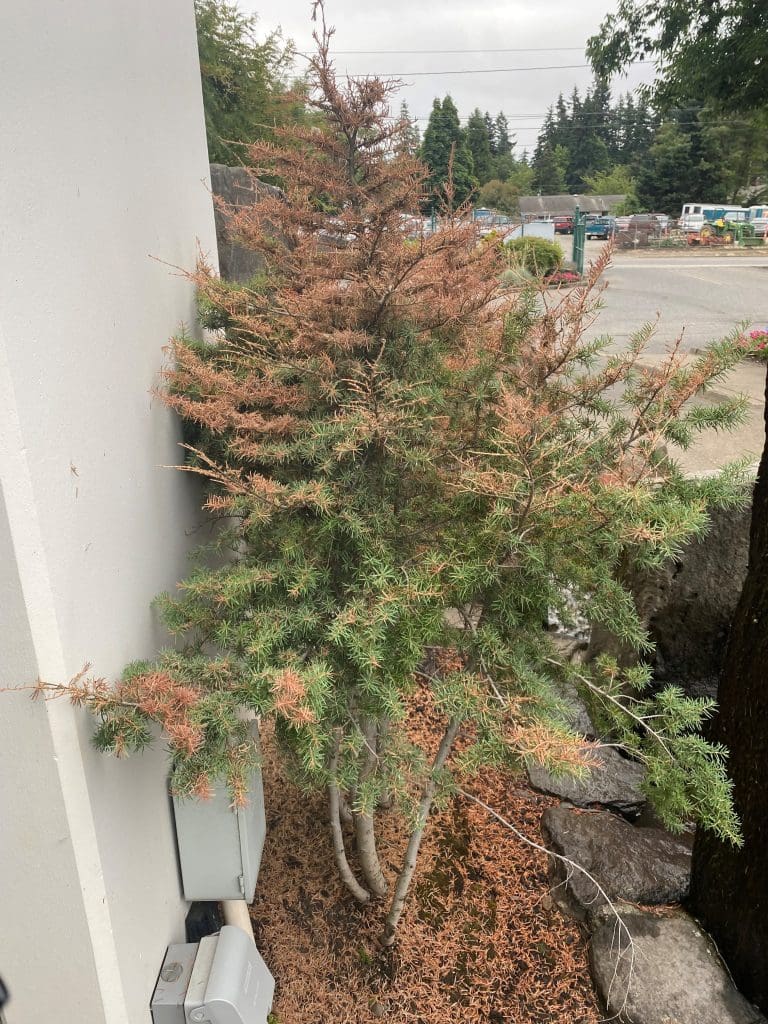
Grover says like any natural disaster, most of their clients have been very understanding that while it’s unfortunate the plants have been damaged there’s nothing Pacific Landscape Management could have done. They just want to stay informed and know what their options are. He says they are giving most plants a month. If they’re not showing signs of response by Aug. 1, they’ll start talking about replacing the plants in the fall.
Similarly, Dirksen says they’re giving the plants time to show signs of recovery before trying to replace any plants. He says they’ve been pruning the tip burn damage and most of the damage has been on new growth and is hopeful the plants will revive.
With the current plant material shortage, Grover says it will be an interesting challenge going forward if they have to replace a number of plants lost because of the heatwave.
Protecting Crews During the Heat
One fortunate aspect of the heatwave was two of the days of high temperatures were over the weekend. Grover and Dirksen say they didn’t have crews work Saturday or Sunday and most didn’t work on Monday, June 28.
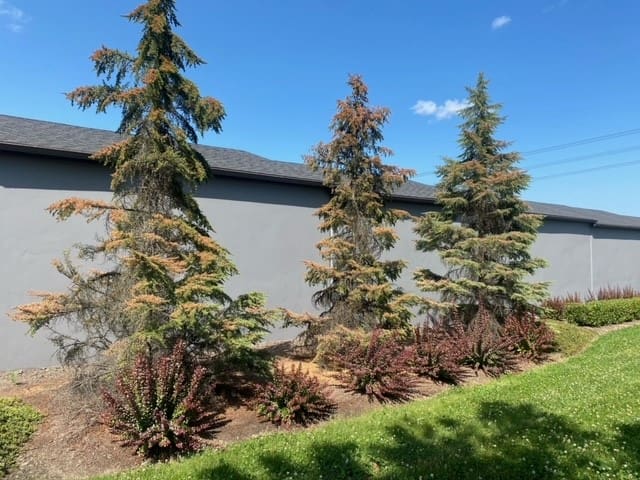
“The big thing was it wasn’t cooling down at night,” Dirksen says. “We were staying so warm overnight that on Sunday we just made the call to not let anybody work operationally because it was going to be above 80 at eight o’clock in the morning and 90 at 9. They were looking at 100 by 10 o’clock and at that point, you need to just shut everybody down and send them home anyway.”
The rest of the week both companies started work very early. Grover says at this time of the year their crews start at 5 a.m. and can get a lot of work done by noon.
Dirksen says they’ve been stocking up on water coolers so they have enough water for their staff and have been focusing their tailgate talks on heat safety when they see high temperatures on the upcoming forecast.

